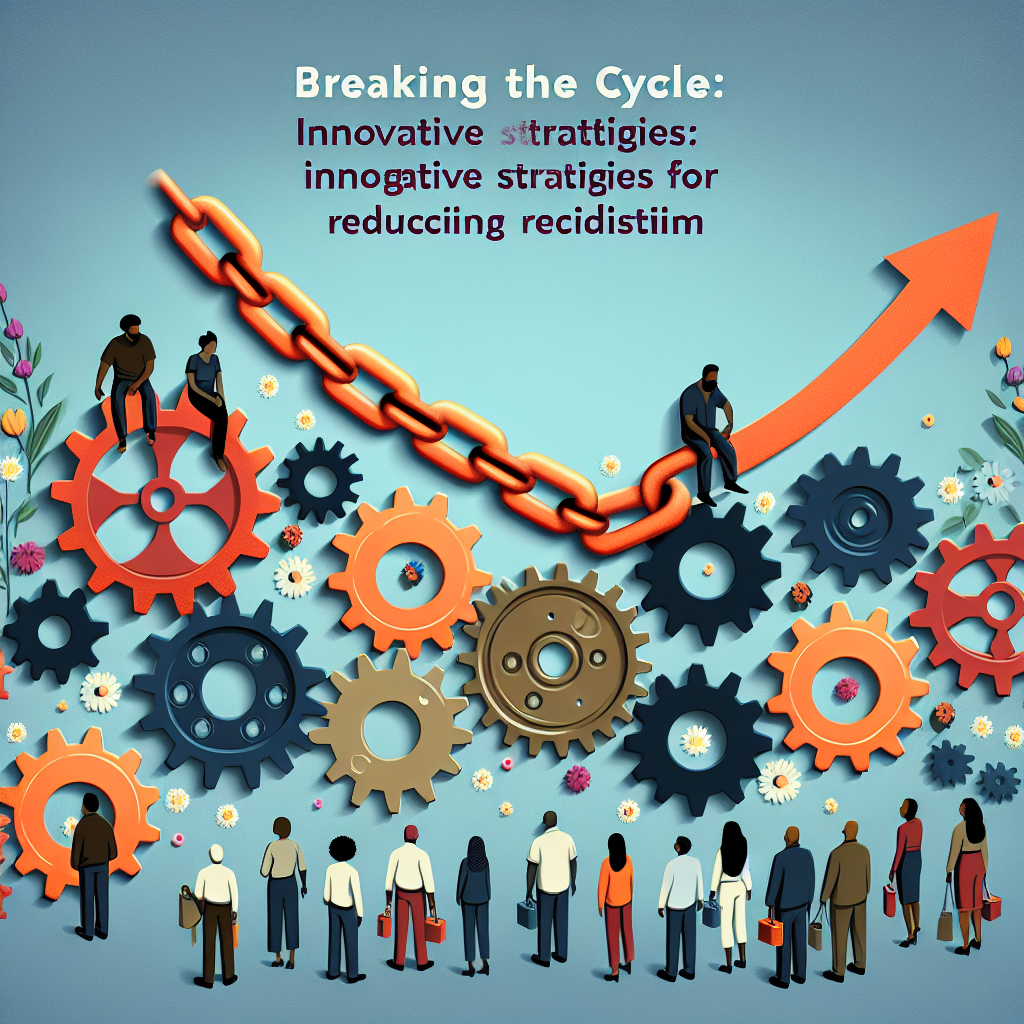
Introduction
Have you ever wondered why so many individuals released from incarceration find themselves back behind bars? Recidivism is a persistent problem in the criminal justice system, creating a cycle that is difficult to break. According to statistics, nearly 68% of released prisoners are rearrested within three years. This staggering figure underscores the urgent need for Breaking the Cycle: Innovative Strategies for Reducing Recidivism. This article delves deep into pragmatic approaches aimed at remedying this pressing issue, offering unique insights and practical solutions that can turn lives around.
The consequences of high recidivism rates ripple through society, affecting families, communities, and local economies. Thus, the quest for innovative solutions has become more critical than ever. By understanding the roots of recidivism and studying successful models, we can shed light on effective programs and strategies that might just work. Let’s explore the transformative journey brewing within the realm of criminal justice reform.
Understanding Recidivism
What is Recidivism?
Recidivism refers to the tendency of previously incarcerated individuals to relapse into criminal behavior, which often leads to new arrests, convictions, or reincarceration. Understanding the factors that contribute to this phenomenon is the first step in Breaking the Cycle: Innovative Strategies for Reducing Recidivism.
Key Contributing Factors
-
Socioeconomic Challenges: Many individuals returning to society face barriers such as unemployment, lack of education, and unstable housing.
-
Substance Abuse: A significant percentage of individuals with criminal records struggle with addiction, making it harder to reintegrate.
-
Mental Health Issues: Untreated mental health conditions often hinder successful reintegration into society.
- Lack of Support Networks: Isolation from family, friends, and community support increases the likelihood of reoffending.
Statistics
| Factor | Percentage Impact |
|---|---|
| Unemployment | 70% |
| Substance Abuse | 55% |
| Mental Health Issues | 45% |
| Support Network Absence | 30% |
The Importance of Innovative Strategies
Why Traditional Methods Fail
Traditional methods often rely on punitive approaches that do little to address the root causes of crime. Understanding this gap lays the foundation for more effective reforms that form part of Breaking the Cycle: Innovative Strategies for Reducing Recidivism.
The Need for Change
To pave the way for rehabilitation rather than retribution, there’s a call to action for developing innovative strategies that consider individual circumstances and promote long-term well-being.
Innovative Strategies
1. Education and Vocational Training Programs
One of the most promising strategies for reducing recidivism is through education and vocational training. Programs that provide skills development, job readiness, and formal education can significantly reduce reoffending rates by equipping individuals with the tools needed to thrive.
Case Study: The Homeboy Industries Model
Homeboy Industries in Los Angeles is a remarkable example. Founded by Father Greg Boyle, this organization provides job training, education, and social services to formerly incarcerated individuals. A report revealed that 70% of their participants secured employment after joining the program, resulting in reduced recidivism rates to less than 15%.
Analysis: Homeboy Industries illustrates how a supportive environment can make a substantial difference, empowering former offenders to rebuild their lives.
2. Mental Health and Substance Abuse Treatment
Integrating treatment programs within incarceration offers a significant advantage. Comprehensive mental health services and addiction treatment can address fundamental issues that lead to criminal behavior.
Case Study: The Maryland Department of Public Safety and Correctional Services
In Maryland, a specialized mental health unit was established within the prisons to vet and treat individuals with underlying psychological issues. Approximately 50% of those receiving treatment showed reduced recidivism rates compared to those who did not participate in these programs.
Analysis: This model not only focuses on rehabilitation but also offers continuity of care post-release, addressing transitional challenges effectively.
3. Community Support and Reintegration Programs
Building strong community networks supports individuals upon their release from incarceration. Programs that focus on mentorship, housing, and family reunification have proven effective.
Case Study: The Delancey Street Foundation
Located in San Francisco, the Delancey Street Foundation helps people with criminal backgrounds to rebuild their lives through a unique combination of housing, job training, and peer support. Their innovative strategy boasts a recidivism rate of less than 10%.
Analysis: Delancey Street’s holistic approach shows that recovery is more feasible when individuals feel part of a community that nurtures growth and development.
4. Restorative Justice Programs
Restorative justice focuses on reconciliation between offenders and victims, fostering accountability and healing. This approach can radically change perceptions and behaviors.
Case Study: The Victim-Offender Dialogue Initiative
In the United States, programs like the Victim-Offender Dialogue Initiative facilitate structured conversations between victims and offenders. Participants in these programs report lower recidivism rates and a deeper understanding of their actions’ consequences.
Analysis: The success of restorative justice initiatives underscores the power of empathy and reflection in reducing recidivism rates.
5. Technology and Data-Driven Solutions
Leveraging technology to track, monitor, and assist individuals post-release can be leveraged as a proactive measure against recidivism.
Case Study: The Smart Jail Project
The Smart Jail Project utilizes data analytics to assess inmate behavior patterns and needs. This innovative strategy helps tailor rehabilitation programs for inmates, which has shown promise in reducing recidivism rates across pilot sites.
Analysis: By integrating tech solutions, systems can more accurately identify issues that contribute to criminal behavior and intervene effectively.
Conclusion
Breaking the Cycle: Innovative Strategies for Reducing Recidivism is imperative for fostering a safer society while empowering individuals to rediscover their potential. As demonstrated by various case studies, innovative solutions centered on education, mental health, community support, restorative justice, and technology are instrumental in turning the tide on recidivism.
Now is the time for us to advocate for these transformative approaches within our communities, encouraging a cycle of healing rather than punishment. The journey towards breaking the cycle starts with awareness, understanding, and a commitment to change. Together, we can foster environments where rehabilitation flourishes, leading to enhanced public safety and reduced criminal activity.
FAQs
1. What is recidivism?
Recidivism is the tendency of formerly incarcerated individuals to return to criminal behavior, resulting in new arrests and reincarceration.
2. What are some effective strategies for reducing recidivism?
Some effective strategies include education and vocational training, mental health and substance abuse treatment, community support, restorative justice programs, and technology-driven solutions.
3. Why do traditional methods fail to reduce recidivism?
Traditional punitive methods often overlook the root causes of criminal behavior, such as socioeconomic challenges, mental health issues, and substance abuse, leading to ineffective rehabilitation.
4. How can community support help in reducing recidivism?
Community support provides individuals with vital networks, resources, and mentorship, creating an environment conducive to successful reintegration.
5. What role does technology play in reducing recidivism?
Technology facilitates data-driven interventions, making it easier to identify risks and needs among previously incarcerated individuals, thereby allowing for targeted rehabilitation efforts.
In closing, let’s continue to advocate for comprehensive strategies that genuinely make a difference in reducing recidivism and creating a more just society.
















